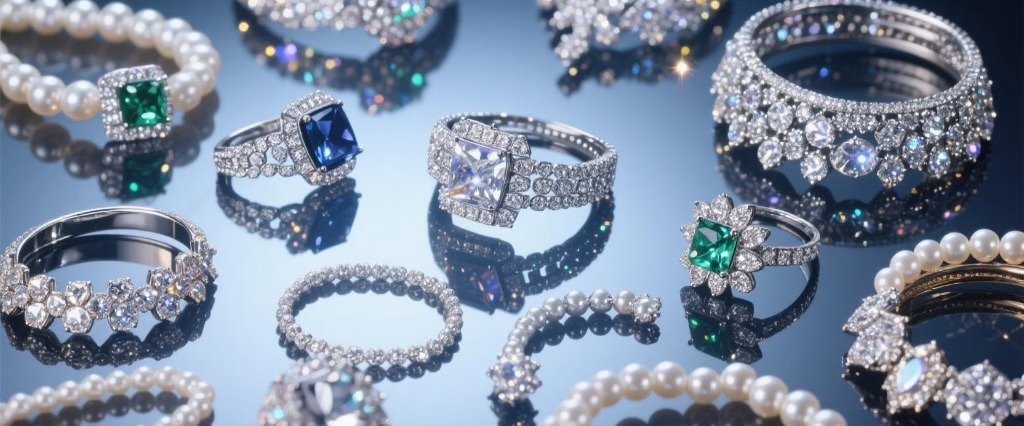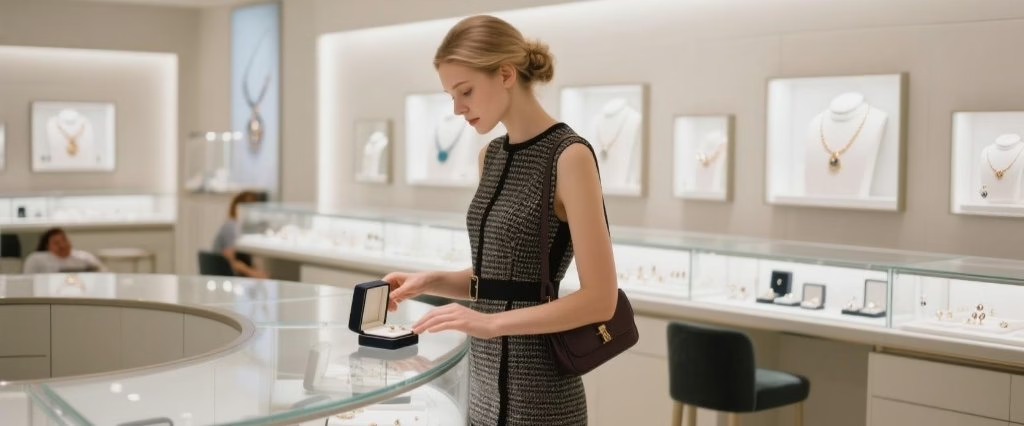Birmingham’s Jewellery Quarter Crowned a World Craft City: A Legacy of Silver and Gold Forges a New Global Identity
In a resounding affirmation of centuries of artistry and innovation, Birmingham’s legendary Jewellery Quarter has been officially granted the prestigious title of World Craft City. This significant honour, bestowed by the World Crafts Council, celebrates not just a place, but a living, breathing ecosystem of creativity that has pulsed at the heart of the city for generations. The designation elevates Birmingham into an elite global circle, recognising its profound and ongoing contributions to the art of jewellery making.
Saad Al-Qaddumi, President of the World Crafts Council, eloquently captured the essence of the award, stating that the title honours the city’s “rich heritage, skilled artisans, creative designers, proud makers, and innovative contributions to the jewellery industry.” This is not merely a plaque on a wall; it is a global acknowledgement of a unique cultural and industrial treasure, a place where history is not just remembered but is actively being forged anew every single day.
A Crown Jewel of Recognition: The World Craft City Designation
The World Craft City status is a highly coveted accolade, reserved for cities and regions that demonstrate an outstanding legacy and a vibrant contemporary practice in a specific craft. Birmingham now joins an exclusive group of just eight other European cities to hold this title, placing it alongside international hubs of artisanal excellence. This achievement is particularly significant for the UK, with Birmingham following in the footsteps of Stoke-on-Trent, which was recognised in 2023 for its world-renowned pottery craft.
For Birmingham, this award is a watershed moment. The Jewellery Quarter Development Trust (JQDT) hailed the news as a “landmark moment for Birmingham and the wider West Midlands.” The trust emphasised that this recognition places the city’s historic Jewellery Quarter “firmly on the global stage,” transforming it from a well-regarded national centre into an officially sanctioned international destination for craft, heritage, and tourism. It signals to the world that the Jewellery Quarter is not a museum piece, but a dynamic, world-class centre of production and design.
Forged in History: The Enduring Legacy of the Jewellery Quarter
To understand the weight of this award, one must delve into the very fabric of the Jewellery Quarter itself. Nestled just a stone’s throw from Birmingham’s bustling city centre, this one-square-kilometre area is a remarkable time capsule of industrial history. For over 250 years, its labyrinthine streets and historic workshops have been the engine room of Britain’s jewellery trade. It is estimated that even today, a staggering 40% of all jewellery produced in the UK originates from this small, concentrated hub of talent.
The Quarter’s story began in the crucible of the Industrial Revolution. As Birmingham grew into the “workshop of the world,” this specific area became a magnet for skilled metalworkers. They crafted not only fine jewellery but also a vast array of intricate metal goods, from buttons and buckles to ceremonial swords and silver snuff boxes. This diverse manufacturing history is still visible today, etched into the architecture and the very soul of the district.
From Industrial Powerhouse to Retail Haven
For most of its history, the Quarter was a place of making, not selling. Its workshops were insular, focused on supplying trade clients and fulfilling large orders. The public had little direct access to the artisans who crafted their most precious possessions. This all began to change in the 1970s, a pivotal decade when manufacturers, sensing a shift in consumer desires, began to open their doors to individual customers.
This transition marked a new chapter for the Quarter. Suddenly, the public could walk into the very workshops where their rings were being sized and their necklaces were being polished. This direct connection between maker and buyer became a defining feature, creating a unique and authentic retail experience that big-box stores could never replicate. The Quarter evolved from a closed-off manufacturing centre into a vibrant destination where one could commission a bespoke piece directly from the person whose hands would bring it to life.

Under the Loupe: The Path to Global Acclaim
Achieving World Craft City status was no simple feat. It required a rigorous application and a meticulous inspection by an international judging panel. The judges embarked on an immersive tour to witness firsthand the depth and breadth of the Quarter’s craft ecosystem, from the nurturing of new talent to the pillars of its industrial heritage.
A Glimpse into the Crucible of Talent: The School of Jewellery
A cornerstone of the judges’ visit was the globally respected School of Jewellery. Established in 1890, the school is an institution steeped in history, housed in a magnificent Grade II-listed building on Vittoria Street. Here, the panel didn’t just observe; they participated. They took part in a hands-on silversmithing workshop, feeling the resistance and pliability of the metal as they were guided by expert tutors. This experience allowed them to appreciate the immense skill, patience, and precision required. They also viewed an exhibition of work by current students, witnessing a dazzling array of artistry and craftsmanship that blended traditional techniques with bold, contemporary design—proof that the craft is constantly evolving.
The Hallmark of Trust: The Birmingham Assay Office and Beyond
The tour continued through the heart of the Quarter’s infrastructure. A crucial stop was the Birmingham Assay Office, one of only four such institutions in the UK. Established by an Act of Parliament in 1773, the Assay Office is the guardian of quality and authenticity. The judges learned about the famous anchor hallmark, a tiny symbol stamped onto precious metals that guarantees its purity and proudly proclaims its Birmingham origin.
They also visited Cooksongold, a major supplier of precious metals, tools, and equipment. This visit highlighted the comprehensive nature of the Quarter’s ecosystem—it is a place where an artisan can source raw gold in the morning, buy a specialised hammer at lunchtime, and have the finished piece hallmarked in the afternoon, all within a few streets. To complete their historical survey, the judges stopped at the Coffin Works, a perfectly preserved 19th-century factory that once produced some of the world’s finest coffin furniture. This unique and evocative museum served as a powerful reminder of the Quarter’s diverse metalworking past, demonstrating a heritage that extends far beyond luxury goods.
The Heartbeat of the Quarter: Voices from the Workshop Floor
Beyond the institutions and the history, the true strength of the Jewellery Quarter lies in its people. The judging panel heard from the artisans who form the living, breathing community at its core.
A Lifetime in Silver: The Perspective of Andrew MacGowan
Andrew MacGowan is a living link to the Quarter’s recent past. He began his journey in 1976 as a bright-eyed 16-year-old apprentice at the School of Jewellery. He has remained in the Quarter ever since, honing his craft as a master silversmith. “I’ve seen so many changes in the Jewellery Quarter,” he reflected, “but it’s still a family, it’s still a community and long may that continue.”
For Andrew, the Quarter’s magic is in its interconnectedness. “I can walk along the road and meet dozens of people that I’ve known for all my working life in the trade,” he said. “It would be a shame if we ever lost that.” He sees the World Craft City status as a beacon of hope. “I’m hoping that with this new status it may encourage people to come back into the trade,” he added, expressing a desire to see a new generation embrace the skills that have defined his life.
Crafting an Inclusive Future: The Vision of Norma Banton
While honouring the past, the Quarter is also keenly focused on its future. Norma Banton, who runs the MasterPeace Academy within the district, is a passionate advocate for progress. She sees the new global status as an opportunity to broaden the appeal of the profession and foster a more diverse and inclusive community of makers. Her aim, she explained, is to increase the diversity of people from across the city taking up the craft. This forward-thinking vision ensures that the Jewellery Quarter will not only preserve its heritage but will also reflect the vibrant, multicultural identity of modern Birmingham, ensuring its relevance and vitality for centuries to come.
Polishing the Future: What World Craft City Status Means for Birmingham
The World Craft City designation is more than just an accolade; it is a catalyst. It provides an unparalleled platform to promote the Jewellery Quarter on an international scale, attracting tourism, investment, and, most importantly, new talent. It validates the work of thousands of artisans, both past and present, and provides a powerful narrative for the city of Birmingham.
This honour ensures that the story of the Jewellery Quarter—a story of fire and metal, of creativity and community, of heritage and innovation—will now be shared with the world. As the glint of gold continues to catch the light in its historic workshops, this global recognition will act as the final polish, allowing Birmingham’s crown jewel to shine brighter than ever before.



